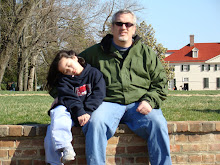by Paul Auster
Copyright 2003 First Edition
published by Henry Holt & Company
pages 243
Paul Auster is one of my favorite authors. His stories are quirky and a little weird. And lately I have noticed, at least in his later books, that he seems to really like and respect his characters. He seems to especially like his women characters. In this book, the narrator spends a lot of time describing how marvelous his wife is, even when their marriage is troubled and he suspects some foul play, he doesn't entirely blame her for that. Even the prostitute in "The Music of Change" is portrayed as kind of a saving angel to the poor gentlemen entrapped in their predicament. I imagine his earlier books were probably a little edgier like most art done by artist/writers in their youth. I haven't read most of his earlier work, so it should be interesting to see if this trend in regards to the characters is there also.
The book is set in New York City, as most of his work is. He is a writer who definitely loves his surroundings and he uses NYC often, if not exclusively, in his writing. The book starts out as the narrator is recovering from some serious accident. One in which he was predicted not to survive. During one of his walks in which he tries to exercise, he walks into a stationary store and buys a beautiful Portuguese notebook. He goes home and is inspired to write in it, which is something he hadn't done since his accident several months back. He makes his living by writing, so it is somewhat important that he start again as he needs to start contributing to the finances of his household. The notebook seems to make the words spill from his pen with ease.
This notebook seems to be the catalyst of several strange events. His wife breaks down and cries in a cab, and she never cries (imagine that!) This happens after they visit a mutual writer friend who also happens to have the same notebook. He warns the narrator that the note book can "be cruel". So the rest of the story is the narrator trying to get to the bottom of his wife's sudden outburst. Also the stationary store suddenly disappears and the writer's friend 's son is having emotional and drug problems. I don't want to go too much further into the story, even though I know most of you won't read it (well maybe you will, if you're reading this -which most people don't! -maybe you're the type who might be interested in reading this book - so I won't spoil it for you).
There are a couple of interesting ideas that Auster uses in this book. First of all, his writing in the blue notebook is the idea he has for a novel, which he calls Oracle Night (hence the title of this book) . So we have a novel within a novel. Not only that, but within this novel (Oracle Night) in the blue notebook, there is yet another novel. Consequently there is some interesting detail on the writing process. It speaks to where writers get their ideas and how they work on these ideas. For instance, he discusses how he writes the skeleton of the story first, and then he plans to go back and fill in the detail (ie. is the woman character single, involved or married? Who does she work for and what does she do? etc.)
Also Auster uses footnotes. He uses them mostly as character development. The present action is part of the story, the past action and background information about the characters is told in the footnotes. This is a little different then the way Junot Diaz used them in "The Brief Wondrous Life of Oscar Wao". I wonder if this is where Diaz got the idea from.
As usual Auster likes to go off on tangents and wax philosophical, which are trips that I enjoy, because, i guess I like his insights into life. So for me, any Paul Auster book is a worthwhile and enjoyable read.
In the following video the Q & A atarts at about the 40 minute mark. Up to then, it is simply him reading from his latest book.
Saturday, July 18, 2009
Subscribe to:
Post Comments (Atom)




No comments:
Post a Comment